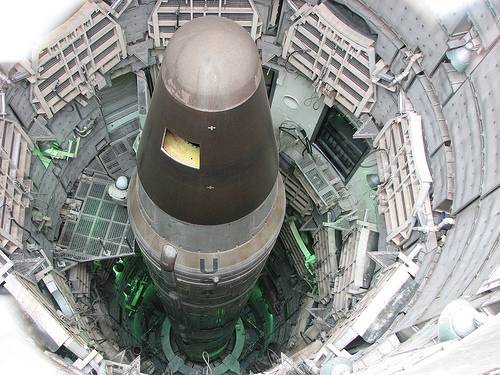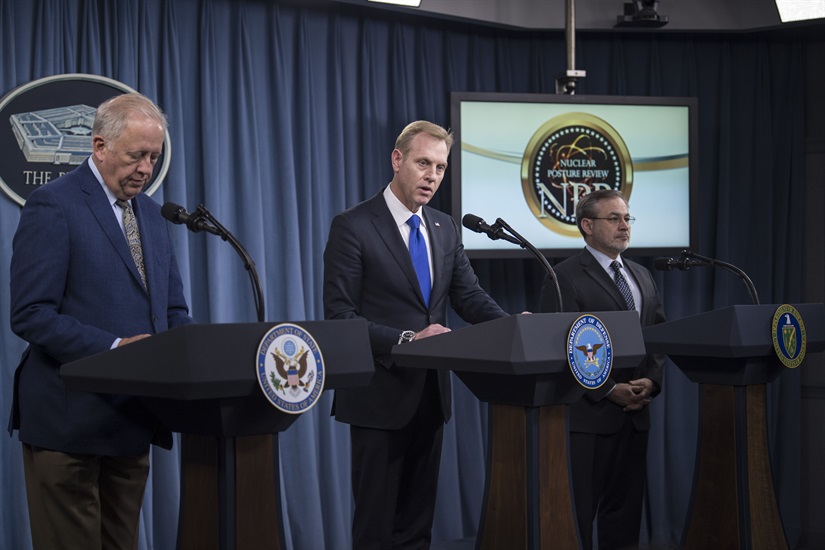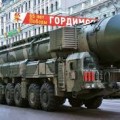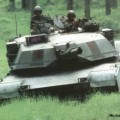What will it cost to deter a nuclear attack against the United States? The Congressional Budget Office (CBO) is required by law to project the 10-year costs of nuclear forces every two years, and has recently released its analysis.
The need for deterrence is clear. The Center for Security Policy quotes General Kevin P. Chilton, who served as Commander of the United States Strategic Command: “Other declared nuclear powers continue to modernize their nuclear weapons, delivery platforms, and infrastructure. Conversely, the US has effectively eliminated its nuclear weapons production capacity and allowed its infrastructure to atrophy. We no longer produce successive generations of nuclear weapons and we have discontinued underground testing.”
 The nation’s current nuclear forces are reaching the end of their service life. Those forces consist of submarines that launch ballistic missiles, land-based intercontinental ballistic missiles (ICBMs), long-range bomber aircraft, shorter-range tactical aircraft carrying bombs, and the nuclear warheads that those delivery systems carry. Over the next two decades, essentially all of those components of nuclear forces will have to be refurbished or replaced with new systems if the United States is to continue fielding those capabilities.
The nation’s current nuclear forces are reaching the end of their service life. Those forces consist of submarines that launch ballistic missiles, land-based intercontinental ballistic missiles (ICBMs), long-range bomber aircraft, shorter-range tactical aircraft carrying bombs, and the nuclear warheads that those delivery systems carry. Over the next two decades, essentially all of those components of nuclear forces will have to be refurbished or replaced with new systems if the United States is to continue fielding those capabilities.
Moscow has indeed not been shy about its fearsome new weapons. One particular weapon, is a missile appropriately called “Satan-2” (or RS-28) by western sources. It will have extraordinary capabilities, and be capable of carrying a sufficient number of warheads to wipe a nation the size of France off the face of the map in a single launch.
Perhaps the most underrated nuclear threat is that coming from China. Writing for the National Interest, Zachery Keck reports that “China’s acquisition of a MIRVed capability is one of the most dangerous nuclear weapons developments that no one is talking about. MIRVed missiles carry payloads of several nuclear warheads each capable of being directed at a different set of targets. They are considered extremely destabilizing to the strategic balance primarily because they place a premium on striking first and create a “use em or lose em” nuclear mentality.”
Last February, the Department of Defense released its Nuclear Posture Review (NPR), a report that laid out the current Administration’s plans for nuclear strategy and force structure. To a large degree, the report represents a continuation of the nuclear posture of the previous Administration, including continuing all major modernization programs. However, the report also proposes the development of several new nuclear capabilities, which have been the subject of some debate. Over the coming years, the Congress will need to make decisions about what nuclear forces the United States should field in the future and thus about the extent to which the nation will pursue the Administration’s nuclear modernization plans.

Pentagon officials release the nuclear posture review. Source: US Department of Defense
If carried out, the plans for nuclear forces delineated in the Department of Defense’s (DoD’s) and the Department of Energy’s (DOE’s) fiscal year 2019 budget requests would cost a total of $494 billion over the 2019–2028 period, for an average of just under $50 billion a year.
The requested funds would cover these costs:
- Strategic nuclear delivery systems and weapons ($234 billion). This category consists of sub-launched missiles, ICBMs, and long-range bombers, funding for activities related to the warheads used by those systems, and the nuclear reactors that power nuclear-powered submarines.
- Tactical nuclear delivery systems and weapons ($15 billion). This incudes tactical aircraft that can deliver nuclear weapons over shorter ranges; DOE’s funding for activities related to the warheads that those aircraft carry; funding for a new submarine-launched nuclear cruise missiles, and funding for a warhead for those missiles.
- nuclear weapons laboratories and their supporting activities ($106 billion).
- DoD’s command, control, communications, and early-warning systems ($77 billion). These systems allow operators to communicate with nuclear forces, issue commands that control their use, detect incoming attacks, and rule out false alarms.
Frank Vernuccio serves as editor-in-chief of the New York Analysis of Policy and Government.
















Follow Us